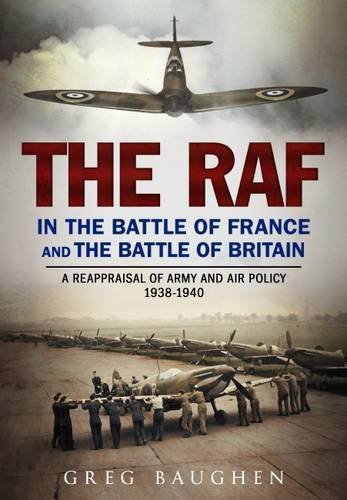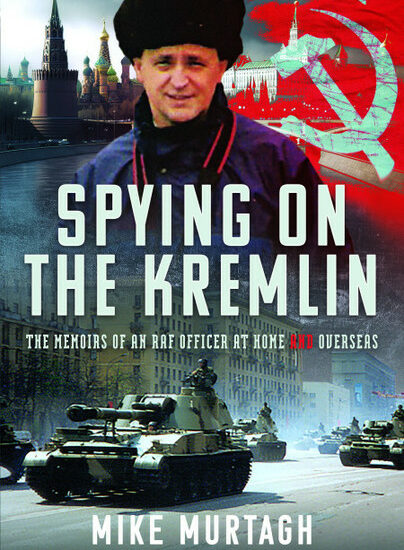The RAF in the Battle of France and the Battle of Britain
Author guest post from Greg Baughen.
Being brought up in a Britain still basking in the glory of a famous victory, it is not surprising my interest in the Second World War began at a very early age. I remember being transfixed by the dramatic retelling of the story in the ”The Valiant Years” tv series, with Richard Burton doing his impersonation of Winston Churchill, all backed by that rousing theme music. (Check it out on YouTube if you are not as old as me!) Spitfires, Lancasters, Messerschmitts and a host of other aircraft dangled from my bedroom ceiling. However, what really sparked my interest in military aviation was spotting a Frog construction kit of a Fokker D.21 in the local sweet shop on my way to primary school. Peering through the window I was just able to make out that this was a Dutch fighter that had fought the Luftwaffe in May 1940. For one so young it was quite a revelation to discover that it was not just the Luftwaffe and RAF battling it out in 1940.
I soon discovered all countries had an air force and the French had a particularly large one. So what happened to the French Air Force in 1940? Every opportunity was take to find out. Detaching myself from a school trip to the Imperial War Museum, I discovered their Reading Room had books in French on the French Air Force (Gosh, those boring French lessons were suddenly proving really rather useful after all!). At university, too much time was spent in the library history section for someone studying maths. And finally there were the regular jaunts to the French Air Force archives in Vincennes.
At this point I had no interest in researching the RAF. I had read “The Narrow Margin” et al. and the history of the RAF seemed pretty much sorted. My aim was to know as much about the French Air Force as I knew about the RAF. But my research into why it all went pear shaped for the French in 1940 was soon posing some interesting questions about how British air power had developed.
It was becoming clear why the French Air Force had failed so miserably in 1940. The country was obsessed with the fear of a German knockout blow razing their cities to the ground. (Hang on! Weren’t we just as obsessed?) They spent the inter-war years equipping their air force with long-range bombers, designed to deter such an attack, or if need be, exact retribution. (Wait a sec! Isn’t that what we were doing with Heyfords and Wellingtons?) In 1940 the French were holding back too many fighters to defend the French heartland and not committing enough over the key battlefields. (Surely that was what Dowding was doing by opposing the transfer of fighters to the frontline in France!)
I discovered the French had borrowed a Spitfire for trials. The Air Ministry were rather worried they would be immediately besieged with requests for Britain’s premier interceptor. As it turned out, the French were not the least bit interested. Its high-speed handling was far too poor by French standards. They liked the engine. They wanted as many Rolls-Royce Merlins as they could get. The French had nothing with that sort of power. But Britain could keep the Supermarine airframe. (What’s going on there? That’s the Spitfire they’re talking about. Are they mad?) Of course, the French were right. Many changes had to be made to turn a specialist bomber interceptor into a more versatile air superiority fighter.
It turned out that the French Air Force did not fail in 1940 because its commanders were handicapped by a First World War mindset. It failed because it had forgotten how it had used air power in 1918. Back then the French Air Force possessed the formidable Division Aérienne. This unit, equipped with several hundred Breguet 14 light bombers and Spad 13 fighters, could be rapidly switched from one sector of the front to another, to support an advance or deal with an enemy offensive. The French had nothing like this in 1940. Unfortunately, the Germans did.
In the1990s I set out my findings in a book and sent it off to various publishers. The response from all of them went pretty much along the lines of “Why would anyone want to buy a book about the French Air Force?”. Twenty years later Fonthill Media (now part of Pen&Sword) took the plunge and it transpired plenty of people wanted to buy a book about the French Air Force.
Back in the 1990s, however, with my French Air Force book apparently a failure, and a young family that prevented me from scooting off to Paris for weeks at a time, it seemed it might be worth doing a bit of research into the RAF, especially now that my study of the French Air Force had me looking at the RAF in a different light. More similarities between the two air forces emerged. I discovered the RAF in 1918 was also an extremely effective tactical air force. It had R.E.8s hovering above the frontline, just like Second World War Austers, not just directing artillery fire, but calling in Sopwith Camel fighter bombers. This was a quarter of a century before the Typhoon’s Normandy exploits. In 1918, the British Army Tank Corps had observation and fighter bomber squadrons permanently attached to it, with the task of seeking out and eliminating any obstacles ahead of the tanks, just like the USAAF Thunderbolts in Normandy with their ‘armoured column cover’ missions.
Having satisfied myself about why the 1940 battles turned out the way they did, there seemed no reason to stop and I was soon moving beyond the Second World War into the Cold War. For years I beavered away on my computer, the butt of many a joke within the family about “The Book”. Even at this point I was not really thinking of it as a book. It was just a rewarding way of getting my ideas clear in my own mind. By the time I retired, my research had reached the 1970s. Perhaps it was time to see if there really was a book there. The word count by this time was over a million. A quick look at the longest books on my bookshelf revealed books were not that long. Perhaps I had written two, maybe three books. I approached publishers and to my horror discovered 120,000 words was a maximum. What I had written was enough for eight or nine books.
And so the task began of carving up the text into books that were publisher friendly. Each book had to be entirely self-contained, requiring no knowledge of previous instalments but each was also a part of a bigger story.
“The RAF in the Battle of France and the Battle of Britain” was where the project began, third in the series but the genesis of what comes before and what comes after.
In this, the 85th anniversary of the Battle of Britain, for someone new to the series, it might not be a bad place to start.

The RAF in the Battle of France and the Battle of Britain is available to order here.
Find more titles from Greg Baughen here.

